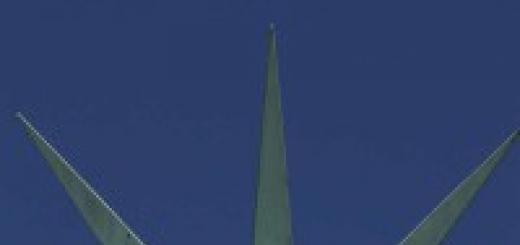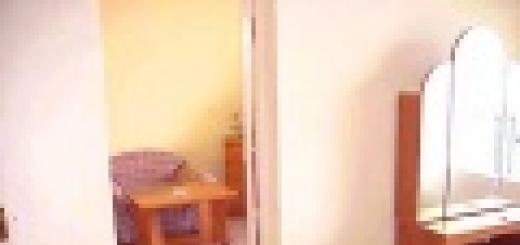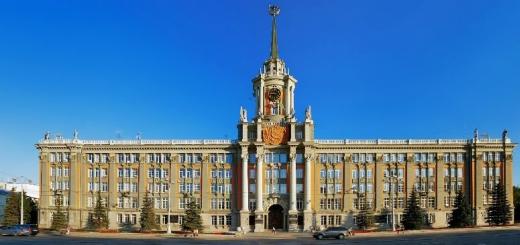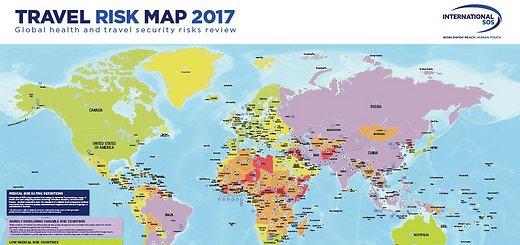Liepaja, Latvia: the most detailed information About the city of Liepaja, main attractions with photos and descriptions, location on the map.
City Liepaja (Latvia)
Liepaja is a city in southwestern Latvia on the Baltic Sea coast. This is the third largest city in the country and one of the most important Latvian ports. In addition, Liepaja is known as the resort center, even though the conditions for rest here are a little behind the modern European standards. In Latvia, the city is often called the place "where the wind is born." And, indeed, the wind from the sea is blowing almost constantly.
Geography and climate
Liepaja - very western city Latvia, located between the Baltic Sea and the Liepaja Lake. Sea coast, mostly, these are stripes sandy beaches. The climate is a moderate marine. In many ways, the weather here is determined by the proximity of the Baltic Sea. In the summer there is warm, but not hot, in winter - small frosts with frequent thaws. About 700 mm of precipitation falls for the year.
History
The first references to the fishing village at this place are dating 1253 year. The village was called Liva and was part of the Livonian Order. At the beginning of the 15th century, it was looted by Lithuanians. In the 15th century, Amsterdam-Moscow commercial journey through the settlement. In the second half of the 16th century, Liva was pledged to the gogyenzollers and became part of Prussia.
During the Livonian war, the settlement was looted by Swedish troops. At the beginning of the 17th century, Liepaja returns to Kurlyandia (former lands of the Livonian Order). In 1625, Liepaja received urban privileges. New town began to grow quickly and develop, turning into one of the most important ports of Kurlenia and shopping centers Region. After the end of the Northern War, Liepaja is part of Poland.
In 1795, the city is part of the Russian Empire. At this time, he is called Libava. At this historical period, Liepaja is developing as a large port, a fortress and railway. Also the city turns into large resortwhich rests the Russian nobility and members of the imperial family.
In 1919, Liepaja becomes the capital of Latvia for six months. In 1941, the city was captured by German troops.
How to get
Liepaja is located 220 km from Riga. If you move onto the car, then two highways lead here: a9 - from the capital of Latvia, A11 - from Lithuanian Klaipeda. By bus can be reached from Riga (about 4 hours), Kuldigi, Ventspils, Klaipeda and some other cities. Railway communication - Riga and Yelgava. The nearest international major airport is located in the capital of Latvia. The ferry message connects the city with Travenda, which is located in Germany near Lübeck.

Beaches and rest
Bathing season lasts only a month and a half - from the end of July (early August) to September, because Baltic Sea It is warm enough. This must be considered when planning recreation. Beaches are sandy. We recommend the beaches of Vecliepaja and Dienvidrietumi with beautiful white sand, which are located in the central and southwestern part of the city. Although there are several beaches in the northern part of Liepaja.
Sights of Liepaja
Liepaja's sights are mainly concentrated in historical center. Although there is no place that can be called the old town. Vintage wooden houses and buildings in the style of Yighda are scattered in the city center and its surroundings.
 Holy Nikolsky Cathedral in Liepaja
Holy Nikolsky Cathedral in Liepaja St. Nicholas Cathedral is an Orthodox Cathedral, one of the main attractions of the city. Built in accordance with the traditions of the Orthodox architecture of the 17th century. The emperor Nicholas II was participating in the first stone bookmark and first worship. The construction of a cathedral of the navigated marine continued from 1901 to 1903.

Church of St. Anna is the oldest religious construction of Liepaja, built in the early 16th century. This is a gothic brick building with high Tower, beautiful altar - masterpiece Baroque and one of the largest organs in Latvia.

Church of St. Joseph - cathedral, built in the 19th century in neo-style style.
What else to see in Liepaja - Interesting Places
- Primorsky Park, located not far from the central beach.
- Luther's church, built in the first half of the 20th century.
- Ancient wooden architecture (in the area of \u200b\u200bthe Primorsky Park).
- House of artisans - products from amber.
- Phantom Tree - Memorable Metal Design in the City Garden.
- Square of roses and chakst area.
Video - Liepaja City
Kosta is part of Liepaja, but at the same time - a completely special world. This is an amazing paradoxical and unique placeTherefore, the oscillator is one of the most unusual objects in Latvia, which is very popular among tourists.
Feel the charming stern of the oscillate!
- Complete on the divorce bridge Oscar Kalpak over the military port channel;
- Strengthen the Potted streets of Koosta, admire the alarms and architecture of the Tsarist Russia;
- Feel the powerful breath of the sea, walking along Northern Mol in a windy day;
- Examine impressive strengthening facilities - and forts on the seashore;
- Combine the visit of S. active recreationBy hiding a cycling trip to a 12-kilometer route "Charming Surrounding Korosta"!
Prison Korostay
One of the most unusual sights of the military port, where tourists offer truly unforgettable sensations. Here you can wear a gas mask or tie a pioneer tie, and also deliver to the boss to the boss.
Tourists can take part in various reality shows:
- to hold an "extreme night" in the role of prisoner;
- touch the thrill in northern forts - arrest, interrogation in prison;
- lovers of the most acute sensations can enroll in the "round-the-clock army."
Northern Mole
Northern mole is a functionally important hydraulic structure of the Liepaja port.
Mol perfectly suitable:
- for walking;
- to monitor sunsets and storms;
- to lose.
Tak can be seen in the sea Fragments of the Northern Fort and Liepaja free port.
History Kostay
In 1905, from Liepaja in Pacific Ocean Large Russian flotilla went to take part in the Russian-Japanese war. In this war, the Russian fleet suffered significant losses, and the Russian emperor ordered the fortress in 1908. She was trying to blow up, however, it was such a monumental and reliable structure that this plan failed.
The remains of Liepaja defensive structures have survived to this day.
Liepaja Military Town, He Karosta (Military Port - Lat.), He is the former port of Alexander III, in my opinion the most impressive and well-known part of the city, formed at the turn of the 19th century as a major naval port and the outpost of the Russian Empire On the Baltic. Liepāja (then the city was called Libava) possessed an unimproving commercial port and was made a dubious decision to equip the support base of the Baltic Navy here. Doubtful, for she (base) could not represent a reliable and safe cover due to extreme proximity to the Prussian border, which was kilometers in 60 from Libay. And for the fleet of a potential opponent, it was not difficult to block the exit to the sea for the Russian squadron. By the way, in a few decades, the construction of the military port of Libava was given preference before Windows (Ventspils) in the choice of the candidacy of the Main Trading Port of Russia in the South Baltic, as it freezed it less and was closer to European markets.
At the end of the nineteenth century, Libava again reached the forefront - they decided to build a military port, and the Special Commission "On the Communications and Share of Action of the Land and Sea Forces in the Defense of the State" rejected the options like Window, Moison and Ekaterini Harbor, which is in the north of the Kola Peninsula . As a result, the fate of the history played with Liepaja, a keen joke after the collapse of the USSR - I will not say anything for Moonzund and Ekaterininskaya Harbor, but Ventspils, which is 100 km north of Liepaja, in Soviet times turned into a powerful trading port with modern arrows and pirs, and survived indeed Stormy flourishing that at the skillful leadership left a heritage had a positive effect on the well-being of the city already in our days - and Liepaja, having received the status of a closed city as the Base of the USSR Navy, remained in 1991 at the broken trough. One of the confirmations of this is the most severe launch of a military town (he is Karosta) in the last two decades.
Anyway, today it is an impressive and unique monument of architecture, an area with its own characteristics and a peculiar Aura, heavily survived the vague 90s, and now, as Latvian information sources say, gradually turning into a solid tourist object. However, up to great fame is still far away, since with all the desire a phenomenon of two and a half Balt and a half of the German, coming to visit the most famous object of the town Liepaja garrison prison, I can not call the mass. Attracting a tourist - the problem is heavy and creative, this requires not one decade. So you can assume that I promote this post on the Internet, although from the local tourist Center I did not get a penny. Joke! 
In fact, the walk turned out not quite holistic, because he planned to come here the next day again, but did not come out, so I will master the next time, which will hope in the summer. 
I will say that - more than recently, five years ago, the military town was a terrible hole, but recently local authorities seem to be for the extraction of this area. Repair roads, launch new sidewalks, highlight housing by the poor in the population. Personally, I expected to see the situation much sadly, but I noticed that the process was slowly moving in a positive side. Very slow, but promoted. There is a long way to go, when a massive tourist, and that the tourist is an ordinary Liepajan, will be able to come to the town and say that it is cool here. 
The administrative building of the ship repair plant, which once produced the repair of warships. Now it seems to be an enterprise, but far from last scales. With the collapse of the USSR and the coating of the planned economy, thousands of military personnel and civilians were left, for which there were no work left, and the 90s were marked by the cooking outcome of the active, able-bodied part of the population. 
Nearby you can see a depressing spectacle on the site of the former house of culture "Baltika". Similar encircling and forgotten buildings in Karoste and Tosmar (Tosmare - adjacent area) here a lot, but again, I repeat, you need time. 
In the time of the USSR, the military, their families, workers with surrounding industries and civil society lived in the military town. The area was pleasant and well maintained, and in the mid-90s it was dangerous for health in the mid-90s. Suddenly there was a huge number of diverse gopniks, lumpenses and marginals, criminal atmosphere It was extremely unfavorable. 
Now there are about 7 thousand people in Karoste. Talked with people, there are living. Customized positively, do not complain, stores are, transport connection The main city is good and regular. Poverty is only, payments are very low, pensions are also small, there is little work. 
This is a residential array of Tosmar courtyard between five-story buildings. Draws graffiti attention with russian flagBrightly distinguished against the background of February gray. By the way, the national composition of the current resident residents of approximately the following: 70% Russian-speaking, and for the remaining 30% native language is Latvian. 
One of Local Attractions - water tower, built in 1905 and providing water all the territory of the military port. 
The territory of the military town is literally styling by rail, especially when the entrance to it. The paths on the picture lead to the grain-loading terminal on the shore of the military canal, which is slightly lower. 
The so-called red store, in the color of the building material. There is also a white store nearby, in the sense there is also some kind of local trading network, but local residents Call shops are still: red and white. 
Some part of the town occupies a similar residential fund - houses built after the war. 
Some roads in Karoste are still asphalted by concrete aviation plates, which are gradually removed. 
Large repair, replacement of road surface and communications on the street, where the progress was - military base Scuba diving. I will explain that in 1906 the first training unit of snorkeling in Russia was organized in the submarine. The homeland of Russian scuba diving is located here in Liepaja. And in Soviet times the base of the submarine of the Baltic Fleet here. 
This part of the town is most launched. The state of the buildings is deplorable. 
The services of the shelter and barracks were located here, once the newest submarines of the Baltic Fleet were based. Now in the military town, no submarines, nor the submarine, but is functioning the only diver training center in the Baltics. And the saps there are also taught. 
Somewhere there was a big swimming pool, but there were no traces from him. Here, by the way, it seems there is an open passage to the harbor of the teller, but also forbidding inscriptions also have. So I did not go further on the closed territory of the port. 
Some of the Soviet Residential Fund Korosta. Want to find out how much properties cost in such houses? The 2-category and requires a small cosmetic repair of an apartment in 48 square meters can be taken over 4-5 thousand euros. Wishing until frankly a little. 
Liepajai Holy Nicolsky marine Cathedralwhose sanctification took place in 1903 in the presence of Emperor Nicholas II and his family. In the time of the Latvian USSR, a regular sailor club and a cinema was located in the cathedral. 
From the cathedral in a straight line 300 meters to the shore. On the horizon there is a northern mole, protecting the Liepaja port from the wind and sandy nanos. 
Then I headed towards the ruins of Libava, and drove out of the military town already through the famous recruiting bridge, which is on the military canal. The bridge was designed according to the sketch of the Eiffel itself and was intended to provide shipping through the Military Town Channel of the Libava base and the land report between the caragon, which is a separate administrative unit and Libava. The bridge is formed from two identical divorce farms, which turn 90 degrees each to its side. 
Some information about the bridge. It is considered the technical monument, this is the only preserved recruiting bridge in Latvia. Interestingly, Alexander Gustav Eifel himself only sketched a technical sketch, according to which the final project was developed in St. Petersburg, and metal structures were brought from Bryansk. 
The bridge has repeatedly faced the system, it was damaged and german army During the First World War, and during the Great Patriotic War. And a little less than 10 years ago, an anecdotal case - Anna tanker, which went under the flag of Georgia, crashed into the northern span of the bridge, rebounding it, and it happened before the long-awaited large-scale reconstruction. Proekt reconstruction again had to revise. 
Military canal, the construction of which required ambitious expensive hydraulic works. 
Hamurai, but a calm Baltika on the horizon. 
Next, I am going to the "mainland" liepay and with hope to return to the town in the summer. What can be said in total? The area is not easy and ambiguous, gradually occur changes for the better. Of course, in the town there are many terrible running angles, ahead is a lot of work, but ... perhaps now there is a slow awakening after a long hibernation. 











